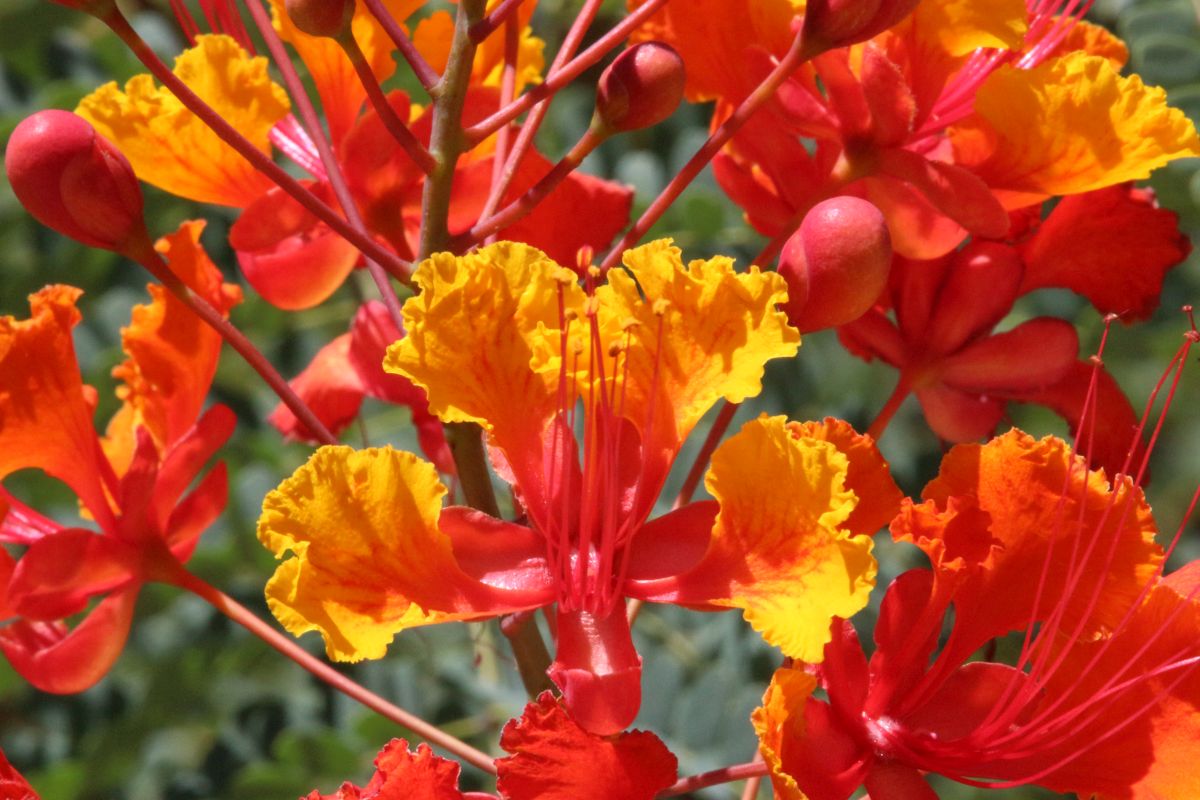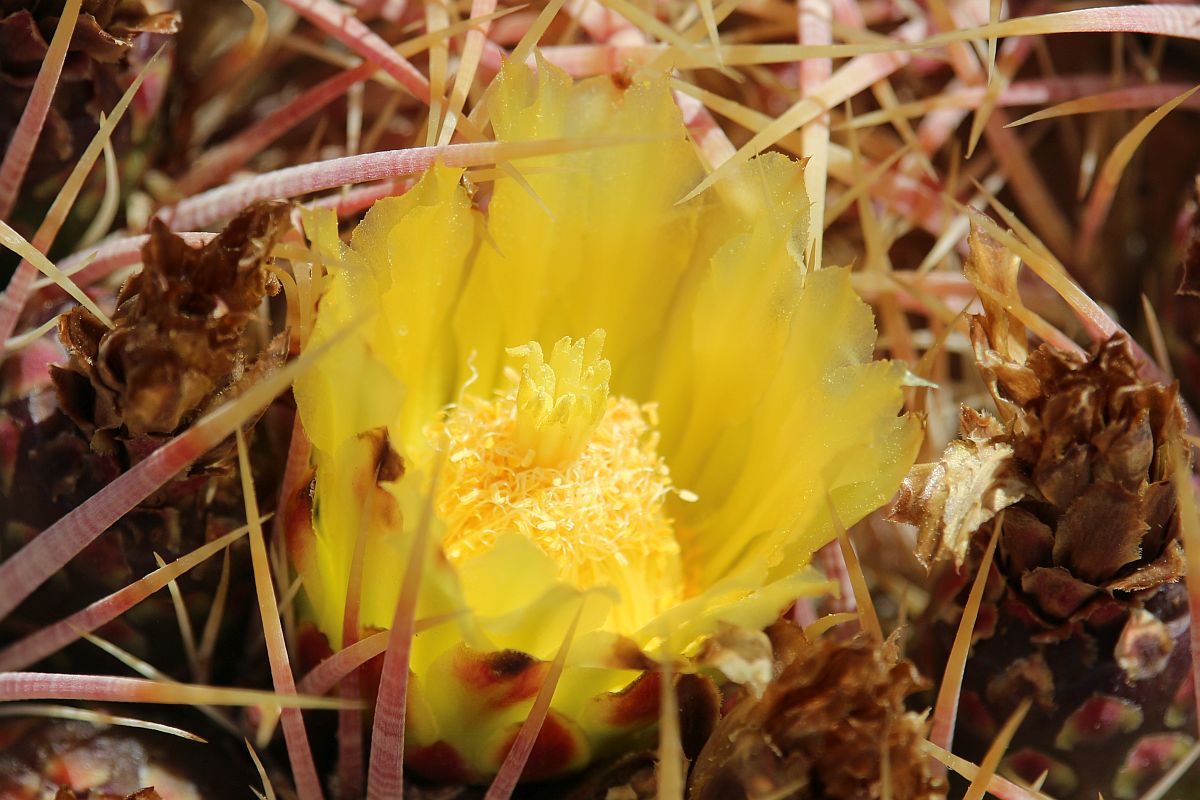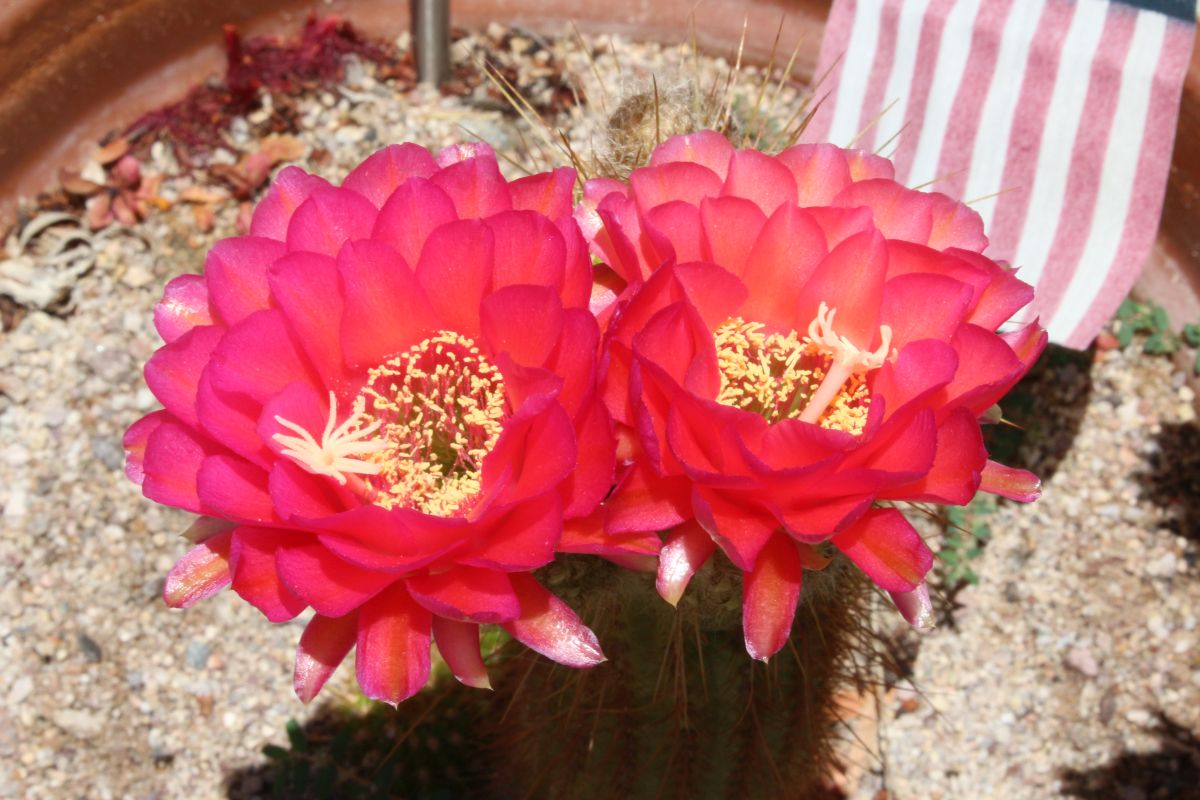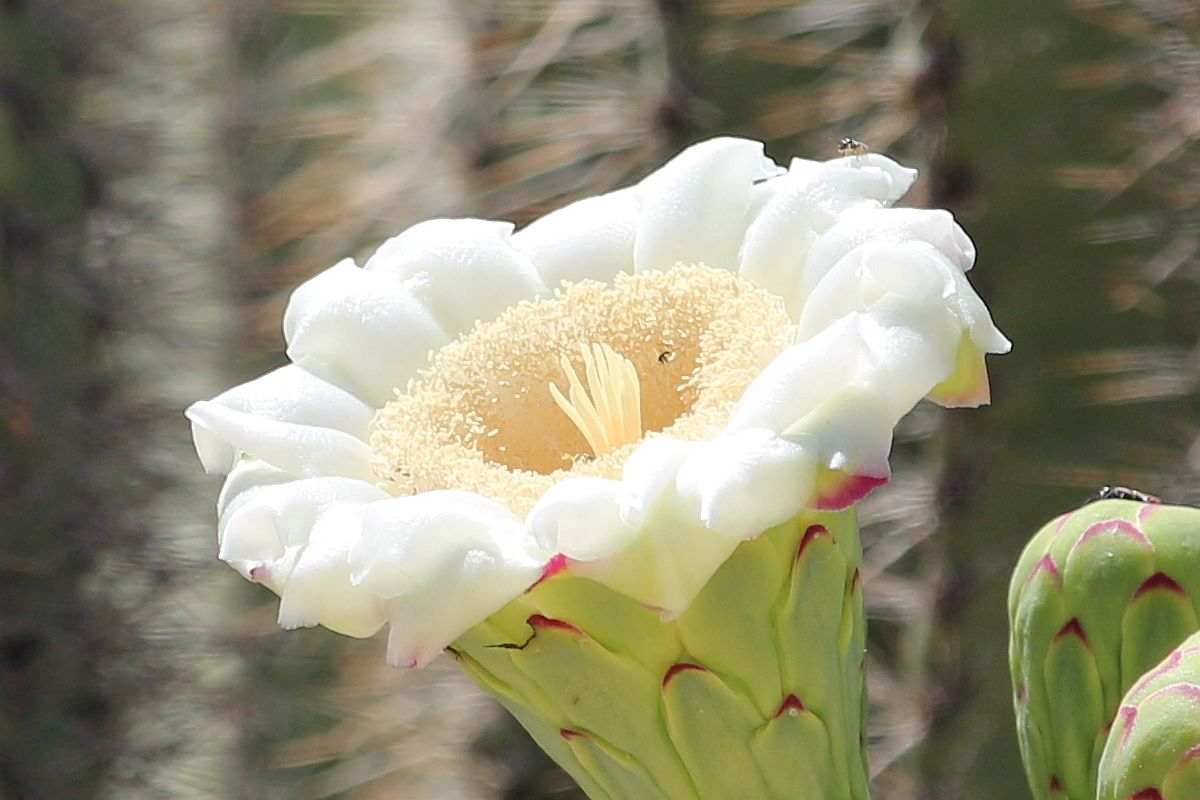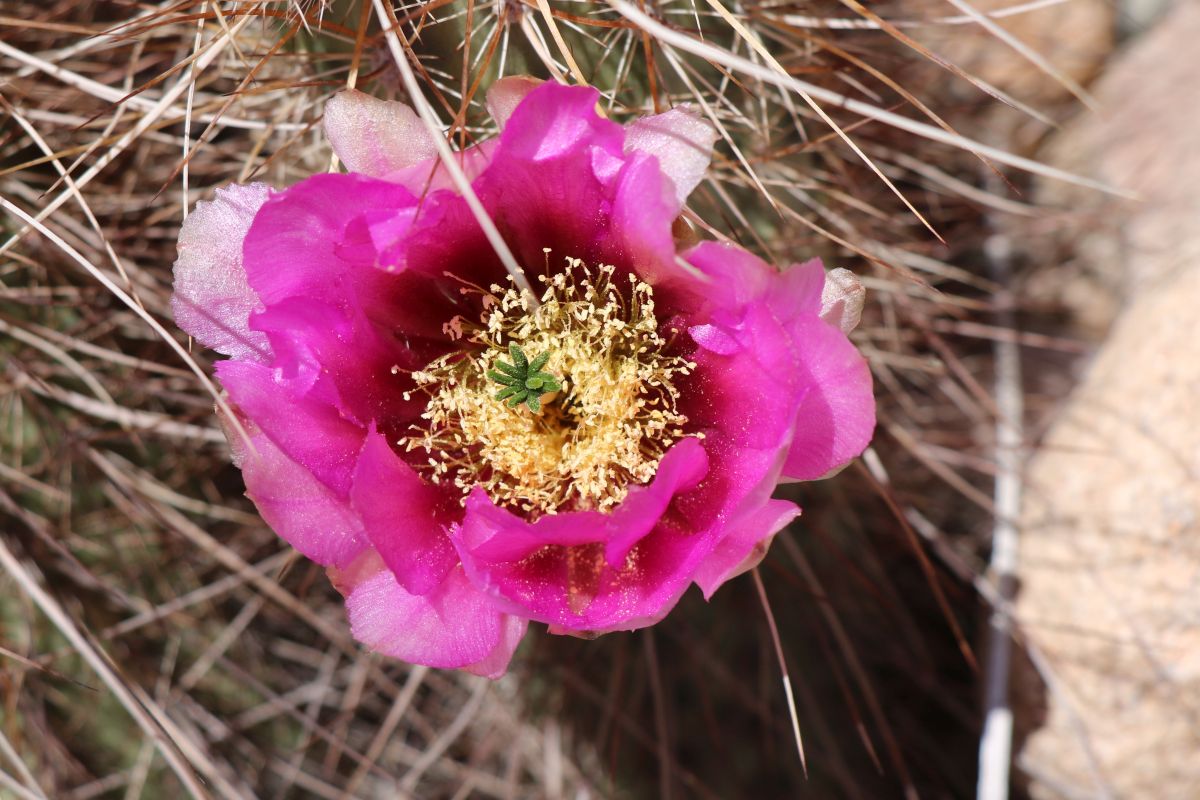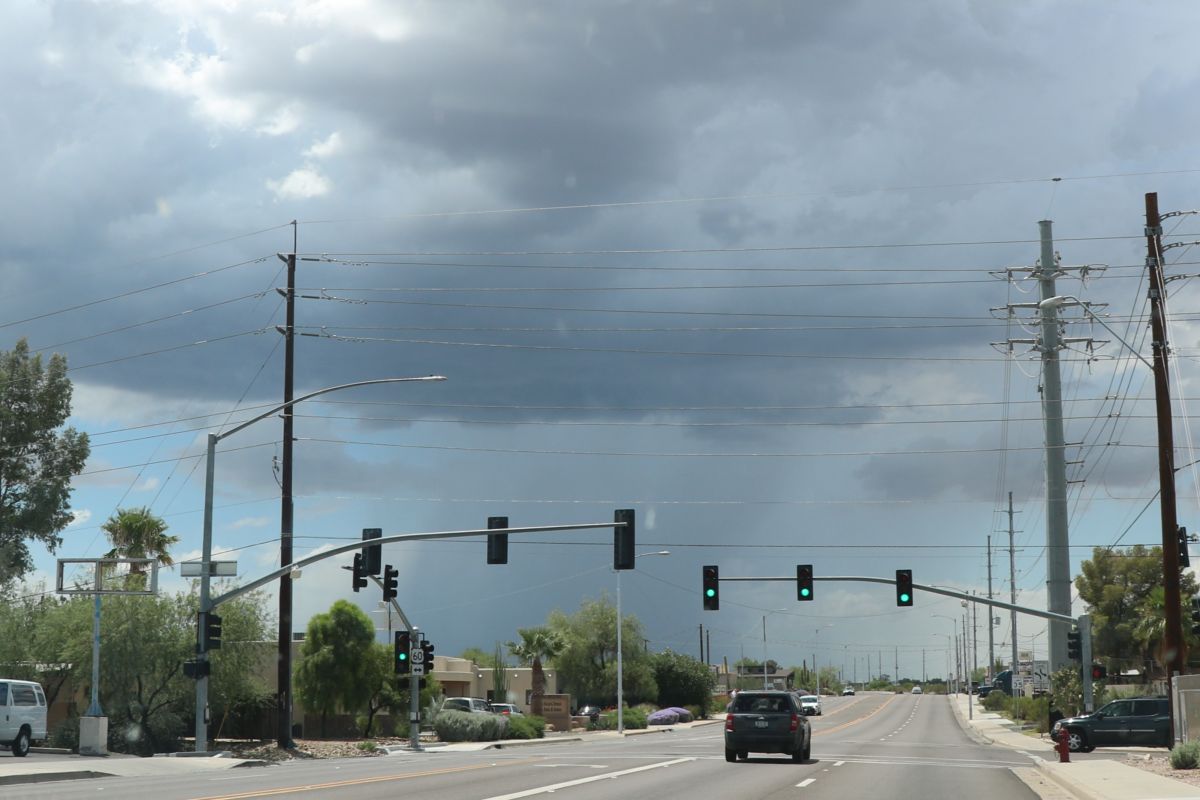
Our usual summer monsoons are upon us. We have been having thundershowers in the area for a couple of weeks and the forecast is for that to continue through this coming weekend and perhaps beyond. Verna took the image above on Monday as we were coming home from picking up our new eyewear from the optometrist – the location is looking west toward the Arizona Outback just before we would be turning right at the signal. There was a large thunderstorm cell dumping a lot of rain in that area. Click on the image to enlarge.
Most of the monsoon cells manage to get around us, but not all of them. We had a magnificent lightning and thundershower event last week during the wee hours that woke us and freaked Cabela and Tucker (our dogs) out for about an hour or so. The storm dumped a lot of rain, but it quickly soaked in or ran off down the wash near our abode.
There has been enough rain near the headwaters of the Hassayampa River that there was some visible water flowing down the usually dry riverbed as we crossed the bridge on US 60 east of town this afternoon.
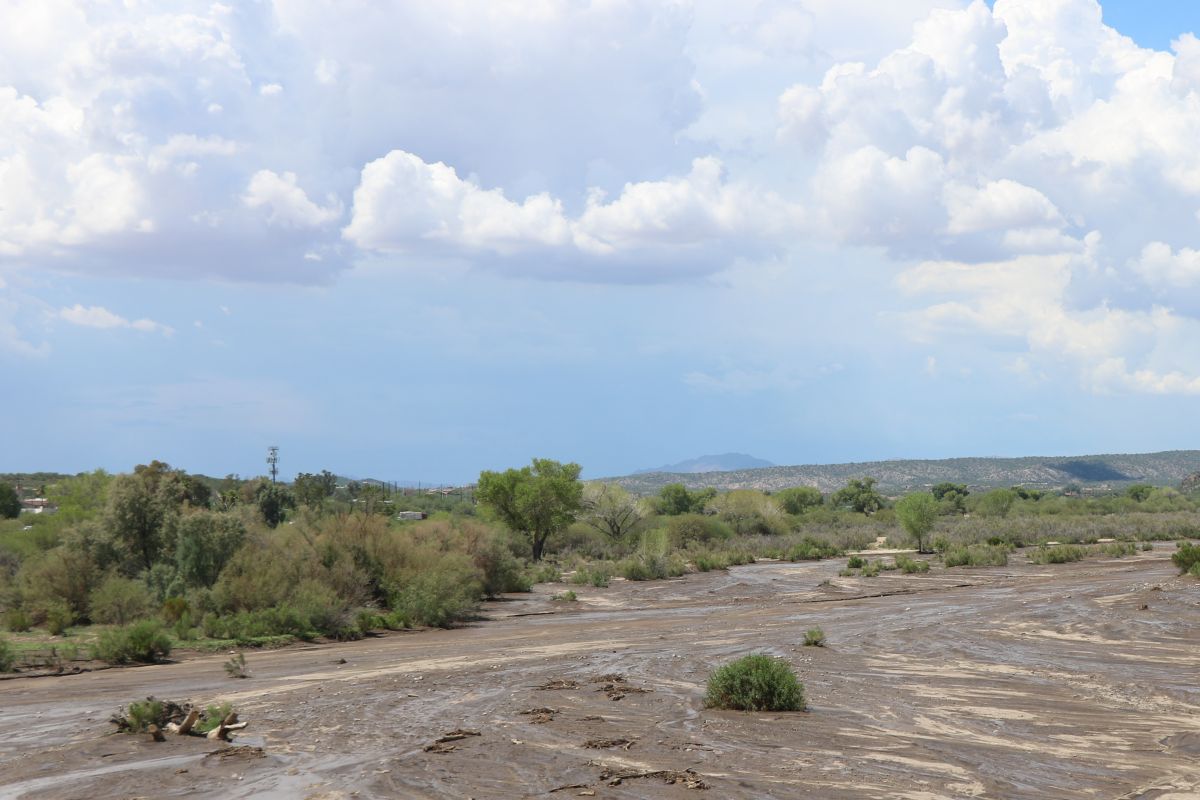
The image above shows the riverbed looking north. This is just a small amount of runoff since history shows the river during peaks with whitecaps and rapids when the monsoons really get going up toward the headwaters. The “raging” river has been known to overflow the banks and do significant damage to riverfront properties and motorhomes. Fortunately, that has not been the case (so far) this monsoon season. Click on the image (courtesy Verna) to enlarge.
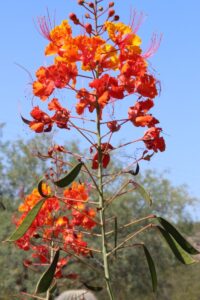 That was our morning courtyard chore today, casting the poisonous seed pods of our Red Bird of Paradise shrubs. When we say “casting,” we mean into a trash receptacle. We remove the pods, as seen growing on the raceme flower stalk in the image to the right (click to enlarge), and dispose of them. If we don’t remove the pods, they could fall to the ground in the courtyard and, while we generally don’t allow the dogs access to the courtyard, one of them might take a notion to eating a pod that has fallen, God forbid.
That was our morning courtyard chore today, casting the poisonous seed pods of our Red Bird of Paradise shrubs. When we say “casting,” we mean into a trash receptacle. We remove the pods, as seen growing on the raceme flower stalk in the image to the right (click to enlarge), and dispose of them. If we don’t remove the pods, they could fall to the ground in the courtyard and, while we generally don’t allow the dogs access to the courtyard, one of them might take a notion to eating a pod that has fallen, God forbid.
